Guest Blogger: Julie Germaine
Happy New Year! January is always a wonderful time to hop on the fitness bandwagon and feed off the good energy surrounding you to lose those holidays pounds and start working on your summer body. This CAN be your year!
Taking a closer look at your diet is the right place to start, before you even think about picking up a new fitness routine.
Any fitness buff will be quick to offer you this reliable tip – Be sure you eat enough protein! Sound advice.
Of course, if you’re like most of us, you have a busy schedule that doesn’t allow for complicated food prep for every meal of the day, which can make it tough to consume the one gram of protein per pound of bodyweight that is recommended. This is one of the reasons that protein powder is such a popular and widely-used food product. That, and if you choose the right brand, it also tastes really delicious.
There are many different kinds of protein powder to choose from, so I wanted to help you streamline your online shopping experience with this simple, five question quiz that evaluates your fitness goals and pairs you with the best variety to achieve them.
1. My number one priority when it comes to my fitness goals right now is:
- To build lean muscle mass quickly.
- To lose body fat and get a more defined mid-section
- Develop optimal health
- To avoid rebounding to an unhealthy weight, I want to maintain healthy weight
- Improve mobility and fight signs of aging
2. When are you the most likely to consume your protein supplement?
- One hour before working out
- Late at night
- No specific time
- As a meal replacement
- With breakfast
3. Do you have allergies or food preferences to consider?
- None
- Limited artificial sweeteners
- No gluten
- No dairy
- No soy
4. Which of these is the most important factor when choosing your protein powder?
- Fast absorption
- Slow digesting
- Hypo-allergenic
- Feeling of satiety
- Full of nutrients
5. Which answer best describes your diet:
- Healthy and well-balanced
- Keto
- Vegetarian
- Vegan
- Protein heavy
ANSWERS:
If you answered mostly A: muscle development and weight gain:
I’d suggest whey protein as the right protein for muscle development and weight gain.
Whey protein is inexpensive, absorbed by the body quickly and contains all essential amino acids, it is a complete protein.
If your goal is to gain lean muscle mass, you will benefit from trusting the research that confirms whey’s positive effect on muscle development and recovery.
You could opt to go with either a concentrate or an isolate. Concentrated protein powders contain slightly less protein (80%, as opposed to 90% in isolates), so you are getting in 10% more carbs and fats, which can benefit your gains if used properly. You can also look into specially formulated weight gainers.
If you answered mostly B: fat loss and weight management
I’d suggest Casein protein as the right protein for fat loss and weight management.
Casein protein digests slowly, so is ideal as a bedtime meal and will keep you feeling full for hours. It is a complete protein so your body is getting the nutrients it needs to support a healthy metabolism.
If you answered mostly C: allergens are an issue
I’d suggest either of the following if allergens are an issue for your protein powder intake.
Hemp protein is a gluten-free, plant-based supplement that is not a complete protein but has the added bonus or healthy omega-3 fatty acids.
Rice protein does contain all nine essential amino acids, however it is lacking somewhat in leucine, which can be topped up by making the perfect marriage and combining with pea protein.
If you answered mostly D: vegetarian or vegan
I’d suggest soy or pea as ideal protein powder options if you are vegetarian or vegan.
Soy protein is a complete protein ideal for vegetarians or vegans. As with whey, it comes in isolate or concentrate, the later often preferred for overall taste.
Pea protein is another good option for you. It is hypo-allergenic, rich in iron and also contains all nine essential amino acids.
If you answered mostly E: recovery and anti-aging
I would suggest egg-white, collagen or BCAAs for muscle recovery.
Egg white protein, Collagen, or BCCAs (soy-free) are all fantastic for muscle recovery and bursting with all the right nutrients to fight the signs of aging and keep your body feeling great!
Please note that these suggestions are exactly that, suggestions and are for informational purposes only. Please check with your healthcare professional before starting or changing any healthcare or nutrition routine.
Article Resources:
https://www.sweat.com/blogs/nutrition/types-of-protein-powder
https://www.runnersworld.com/nutrition-weight-loss/a27079077/types-of-protein/
https://greatist.com/fitness/protein-supplement-nutrition-guide#8
https://www.healthline.com/nutrition/whey-protein-isolate-vs-concentrate
https://www.todaysdietitian.com/
https://www.healthline.com/nutrition/best-protein-powder#TOC_TITLE_HDR_10
Visit Julie Germaine’s website for more information on nutrition, exercise and overall health to make achieving your fitness goals possible! www.juliegermaine.com
